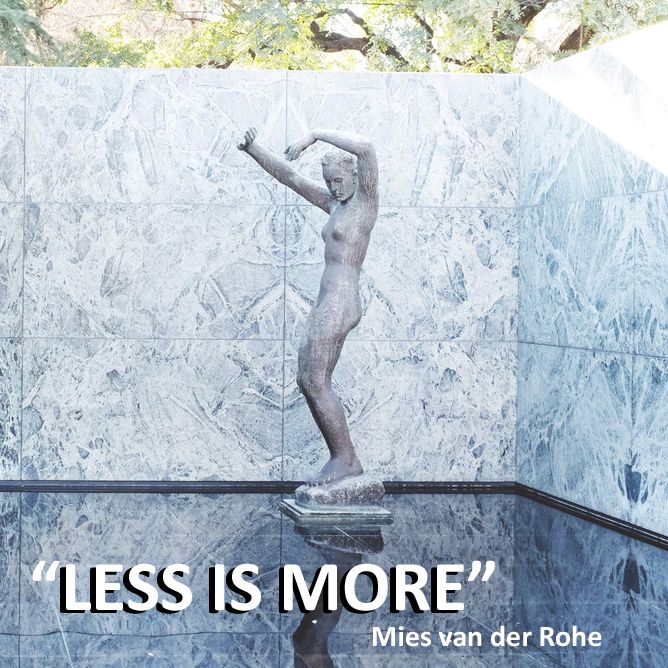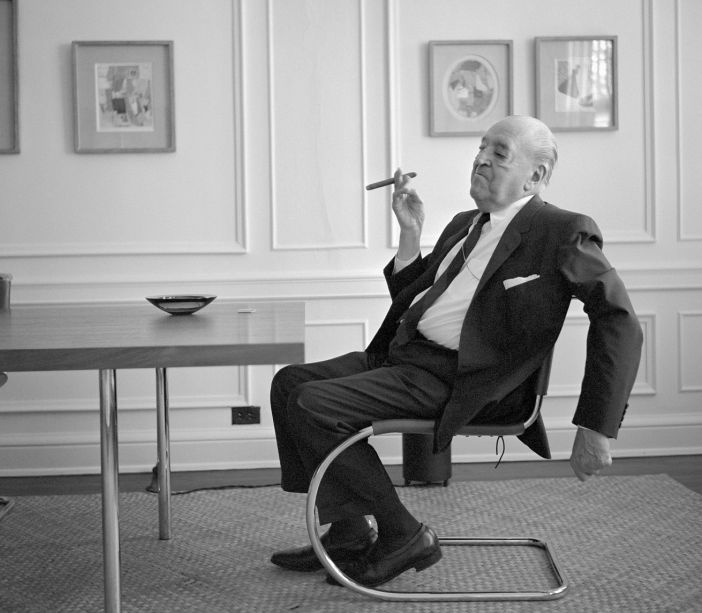In what way(s) has the phrase "Less is More" impacted your profession?

One of the most influential architects in history, Mies van der Rohe, was the first to popularize this phrase when describing, in part, how little of the right materials are needed to support buildings. Consider for example, the addition of the Roman arch to square Greek columns that permitted larger interior volumes of buildings to exist, then Mies' use of steel to enclose far larger volumes as we have today.
As anyone who knows me will tell you, I am a strong proponent of the idea of "less is more." It's a guiding theme I've applied to many areas of my personal and professional life. It stemmed from my time as an undergraduate at the Illinois Institute of Technology where Mies' thinking still guides the school of architecture. I recall many hours sitting in upper level physics lecture on the second floor classroom of Siegal Hall staring south-southeast at the north side of Mies' Crown Hall thinking about the simplicity of his design and how it was such a drastic departure from all architecture that came before it. I thought about how it compared with Frank Lloyd Wright's architecture and tend to believe Wright's natural blending of his architecture may be better known just because we've become convinced that the illusion of physical comfort is more important than comfort of the peace of mind we experience in spaces with minimal visual and audio stimulation. As for physical comfort, I can't imagine anyone opting for Wright's tall, straight, wooden high back chairs versus Mies springy, cushiony chairs that are now ubiquitous as lounge furniture. It's simple in design for optimal functionality.
When in doubt, opt for less. If you want to get a point across in a presentation, eliminate anything that's potentially distracting like superfluous design elements. Crop photos without leaving any stray marks along the edges. Create your own images, graphs, and data sets. Get rid of all those unnecessary cell lines in tables. I usually only have one horizontal line under the column headers and maybe one vertical line to separate row headers from the data. And the lines are black. Opt for less color and more attention to content. Don't just toss text and images onto the page, align them well and give your content the red carpet treatment so your audience knows it's worth paying attention to.

When you look at the famous photo of Mies reclining in one of his own chairs smoking a cigar, what do you see? Today it looks like an ordinary photograph of a man sitting in an everyday chair, however, this chair didn't exist before he designed it. He's quite literally showing off his work in this photo. He's demonstrating the strength of the metals he used in his buildings to create large spaces -- like that found in Crown Hall. In fact, if you were to visit Crown Hall, upon entering the building you'll find large pillars near the middle of the building that appear to be supporting the ceiling. They in fact do not touch the ceiling, but are there merely to set at ease the minds of anyone who enters the building. You see, at the time when the building opened to the public, the interior span of the building was the largest ever created anywhere in the world. It was difficult for some people to believe that the building wouldn't collapse on them, and so the pillars were constructed just to set visitors' minds at ease. Of course, after decades of familiarity and many other buildings having such large interior spaces, we've become accustomed to it. In this case, perhaps less was not more since he had to find a way to accommodate the minds of people unwilling to wrap their heads around the sheer simplicity of his architectural work. Thus, even though "less is more" is a great guiding design mantra, always be aware of the comfort of your audience. You'll get more visitors if you relax your design constraints just enough.
In what way(s) has the phrase "Less is More" impacted your profession? Mies' work was largely one of great engineering concepts in materials and design. How have you implemented "less is more" in your work? And how has it helped shape your personal and professional growth?
